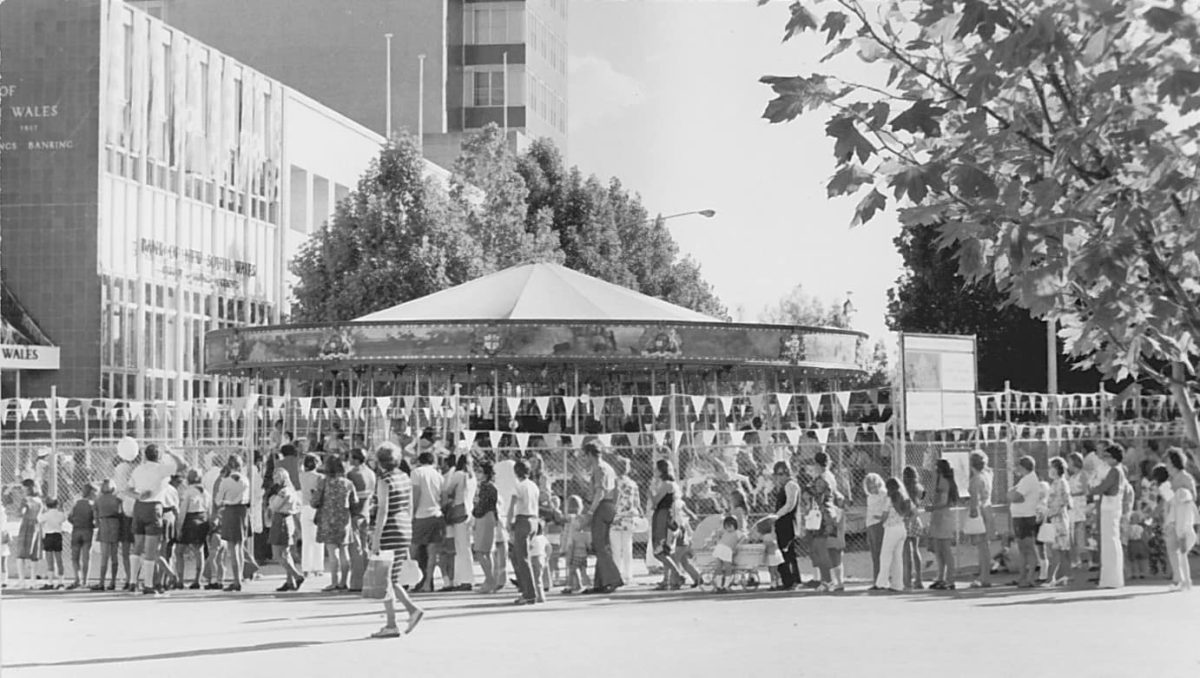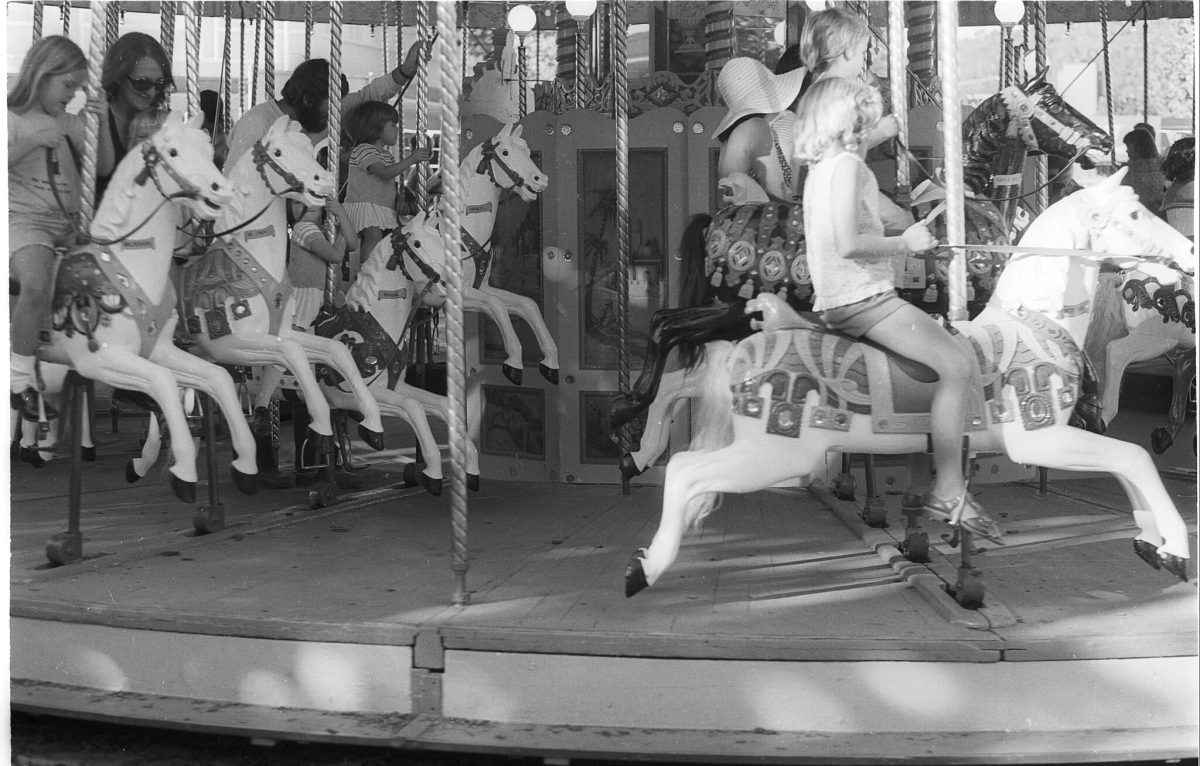
The Civic Carousel (or merry-go-round) has been a popular Canberra attraction for 50 years. Photo: Spelio, Flickr.
2024 is shaping up to be the year of anniversaries for Canberra.
It’s 60 years since the 79-metre high American-Australian Memorial was officially opened in Russell, after a delicate process that involved trucking the concrete eagle down from Sydney to Canberra and installing it at night when weather conditions were calmer.
It’s 65 years since the copper-roofed ‘Shine Dome’ opened, the first Canberra building to be added to the National Heritage List for its standout architecture.
And it’s 60 years since the drought broke enough for Lake Burley Griffin to fill in six days and for then Prime Minister Robert Menzies to declare it the “heart to the city” and one “I hope … will be quietly beating … for the rest of our lives”.
On 14 March 1964, the Canberra branch of the Royal Aeronautical Society then hosted the world’s first hovercraft race on the new lake.
But on City Walk in Civic, one of the city’s quaintest features is celebrating two anniversaries at once. This year marks 110 years since the merry-go-round was made, and 50 years since it was installed in Canberra.
The story begins with Herbert Thomson, born in Melbourne in 1890. By age 19, he had helped his father install machines in coal mines and built a steam engine used in a boat launch on the Yarra River. By 27, he had set up his own business producing steam engines and boilers.
In July 1899, he revealed his tour de force – a self-propelled, steam-driven vehicle – or, to put it another way, Australia’s first car. It reached a top speed of 24 km/h, hit during a 56 hour, 36 minute maiden journey from Bathurst to Melbourne.

Australia’s first car, the ‘Phaeton’, designed by Herbert Thomson. Photo: Museums Victoria.
The Thomson Motor Car Company was born, and subsequent models reached 40 km/h and even beat a Benz imported from Germany. The company went out of business in 1912, but not before Herbert had designed a steam-powered carousel for St Kilda beach.
It was a properly international effort. The animals, including 50 horses and two elephants, were hand carved in Germany, and sit four abreast in 14 rows, while the twisted brass poles were made in Scotland. Jaunty accompaniment was taken care of by a steam-powered 69-key pipe organ, also from Germany.
It drew crowds in Melbourne until September 1973, when Canberra locals collectively raised $40,000 to purchase it from a public auction.

The Civic Carousel (or merry-go-round) soon after it arrived in Canberra. Photo: Spelio, Flickr.
It was in a sorry state by then, and underwent a heavy restoration courtesy of the Carousel Organ Restoration Group, Australian War Memorial, Canberra College of Advanced Education, Master Painters Association, Canberra Gem Society, and Model Makers Society.
Volunteers from the Australian National University (ANU) restored the steam engine in the centre of the merry-go-round.
The finished product was unveiled on Petrie Plaza in the heart of Civic during Canberra Day celebrations on 13 March 1974, and it’s been there ever since. It is now considered a heritage-listed ACT Government asset and managed by the ACT Property Group.
The only major changes are that the driving force is now a modern electric motor, rather than the original steam boiler, and the organ has been removed for safekeeping.
City Renewal Authority CEO Malcolm Snow says it’s become a “landmark” to generations of Canberrans.
“It’s one of those attractions with universal appeal.”
It might not have been a hit with everyone at the time of purchase, but Mr Snow says not only was there strong appeal for a young city to have such a heritage item, but the carousel also arrived during a push for the pedestrianisation of the city.
“Civic was a different place at the time – it had cars going through it. But then Petrie and Alinga were closed to traffic and pedestrianised.”

Each of the animals have a name – see the full list here. Photo: Spelio, Flickr.
Today, the cost for a ride is $3. Day-to-day operation is managed by a not-for-profit charity, chosen by the ACT Government. Most of these earnings are directed to this, with the balance used to fund upkeep.
“We’ve also offered free rides during promotional campaigns in the city, particularly at Christmas time, and we’ve certainly seen great take-up from the people of Canberra,” Mr Snow adds.
As for the future, it’s hoped we’ll be back in 50 years time for a story on its centenary.
“I can’t say with certainty that it will be there in 50 years’ time, but certainly any decision to relocate it would have to take account of its heritage significance,” Mr Snow says.












